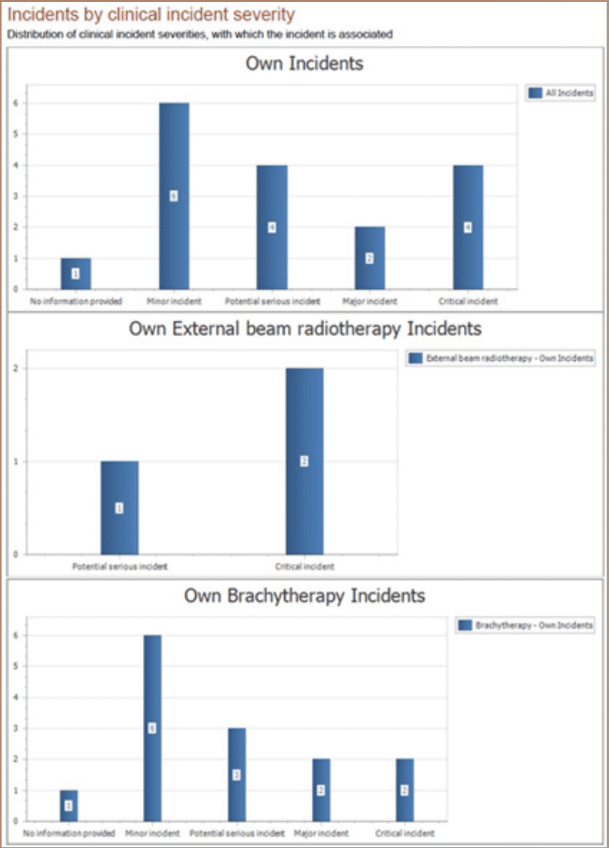Brachytherapy is a complex process involving an intricate series of steps that must all be performed correctly to administer a safe and accurate treatment. Safety incidents can and do occur. In 2000, the IAEA included 22 brachytherapy incidents and accidents in a review of lessons learned from accidental exposures in radiotherapy.1 For the years 2011 through 2015, the U.S. Nuclear Regulatory Commission reported to Congress 27 HDR "abnormal occurrences" involving the wrong treatment site or overdose of greater than 50% to the treatment site, as well as nine grossly mispositioned permanent prostate seed implants.2 The French regulator Autorité de Sûreté Nucléaire described 19 notifications in 2013 and 2014 of significant radiation protection events concerning pulsed dose rate and high dose rate brachytherapy treatments.3 In 2016, Public Health England published a review of 279 radiotherapy error reports involving brachytherapy treatments, including 71 errors that reached the patient.4 Although SAFRON was initially limited to incidents involving external beam treatments, the benefits of an international safety learning and reporting system apply to all radiotherapy modalities. The IAEA has released an updated version of SAFRON to also address brachytherapy.
When submitting a new incident or searching for incidents, the user is asked to select a treatment modality and brachytherapy is one of the choices. Next, the user is asked to select a treatment method such as high dose rate remote afterloader, permanent manual brachytherapy or electronic brachytherapy. A separate list of process steps for brachytherapy was developed for SAFRON based on applicable portions of the consensus recommendations for incident learning database structures in the 2012 article by Ford et al5. The list of safety barriers used in SAFRON was updated to add several barriers that are important in brachytherapy treatments.4 SAFRON statistical reports were also updated to incorporate brachytherapy incidents. For each of the types of statistical reports, there are now separate graphs to show external beam and brachytherapy incidents combined, only external beam radiotherapy incidents and only brachytherapy incidents.
SAFRON statistical reports were also updated to incorporate brachytherapy incidents. For each of the types of statistical reports, there are now separate graphs to show external beam and brachytherapy incidents combined, only external beam radiotherapy incidents and only brachytherapy incidents.

Click here to download the complete PDF on SAFRON updates.
We have noticed that you have an ad blocker enabled which restricts ads served on this site.
Please disable it to continue reading AAPM Newsletter